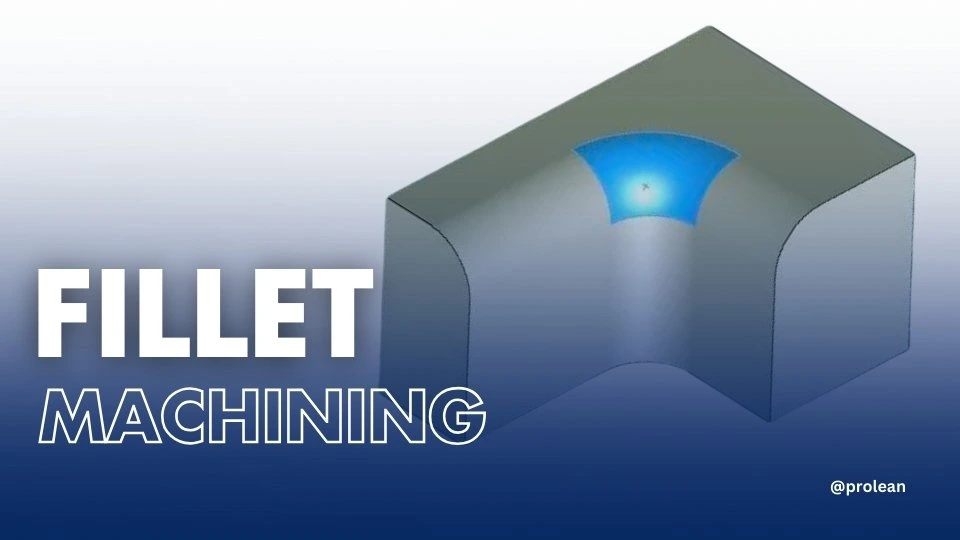
In engineering, CNC fillet machining refers to rounding internal or external corners. These rounded edges can be both on interior and exterior parts.
Convex fillets are outside fillets, while the concave fillets are inside fillets. Its main function is to minimize stress concentration and distribute stress within a structure.
Fillet radii are defined as rounded interior edges or corners. These enhance casting quality and load-bearing capacity. Casting designs also benefit from fillet radii to improve performance.
This guide lets you understand what is a fillet, how are fillets machined, and designed, and their primary applications.
What Is a Fillet? Purpose and Fillet Design
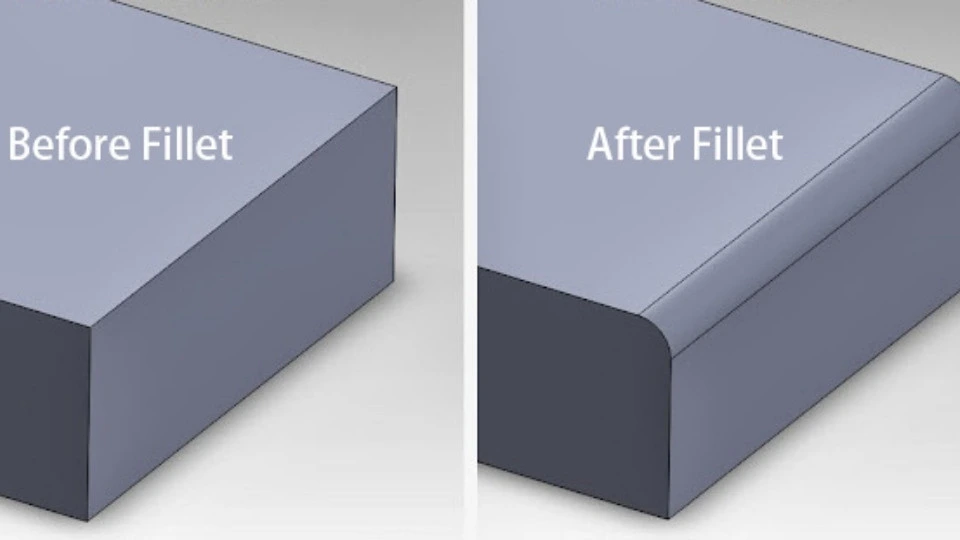
Image Name: Fillet Machining
Fillet definition engineering edges are used at direction changes to reduce stress. It also explains that these edges are smoother and round edges reduce friction and increase product sturdiness and longevity. They assist in reducing the fatigue level and increase load load-carrying capability of parts. In most designs, stress reduction is achieved using fillets rather than using chamfers.
Even though, fillets have their practical uses; they also make things look aesthetic. The edge’s smoothness is also more rounded and gives the object a more professional look. Interior fillets look like hollowed out, while exterior fillets look like protruding. However, if fillets are used just for cosmetic purposes, the use of CNC machining can be expensive and time-consuming.
Bevels or chamfers often look like fillets. However, they are not the same. A fillet is round whereas a bevel has an angle cut in it. Machined edges can also be beveled if the edges are to be welded or otherwise used to create a strong permanent connection.
Try Prolean Now!
When to Avoid Using Fillets in Part Designs?
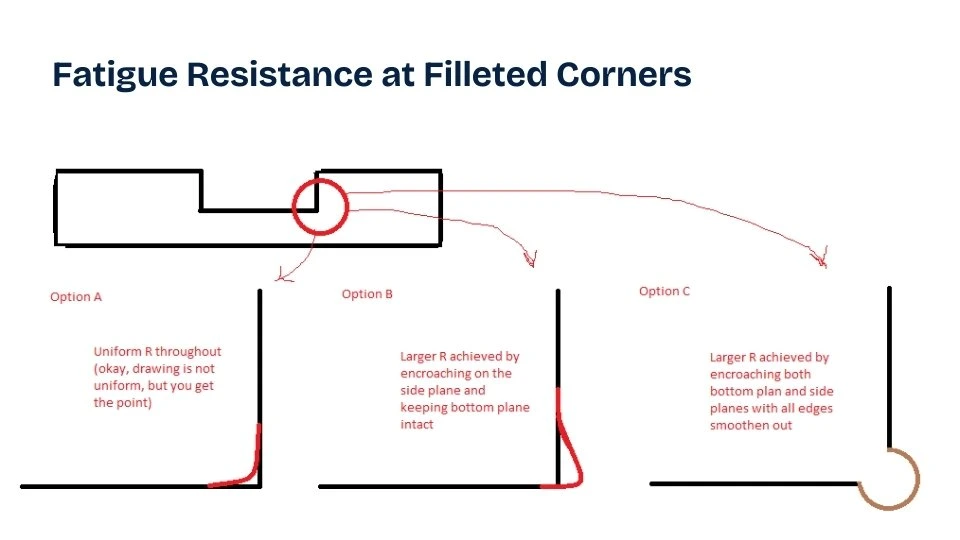
Image Name: Fatigue Resistance at Filleted Corners
Fillets enhance part design but may add extra cost on some occasions. Do not use fillets when they are not going to offer you any functional benefit on your part. Here are some scenarios to avoid fillets;
Avoid Fillets on the Bottom Edges
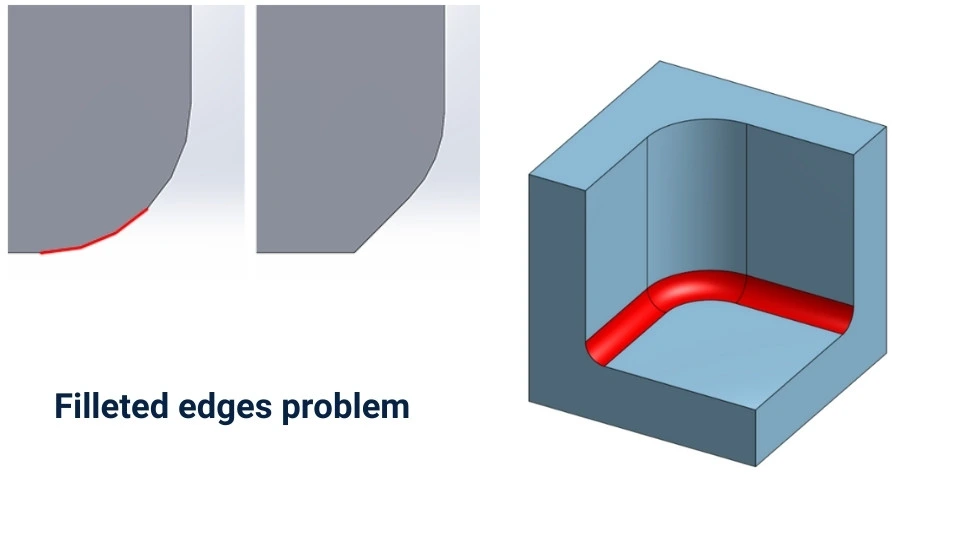
Name: Fillet Edges Challenges
Filleting the bottom edges of blind holes or pockets improves the appearance but tends to incur additional costs. Ball endmills are needed, and they cost more than square mills. These endmills require 3D machining operations which makes the production slow and complicates the procedure. In addition, ball endmills have reduced tool life and material cutting rates when compared to square-bottomed cutting tools.
The stress reduction at the bottom of a cavity is usually optimized by a change of depth or changing the position of the geometry. These changes are more economical compared to the fillet machining of intricate cavities at floor level.
Don’t Use Fillets in 3D Printed Objects.
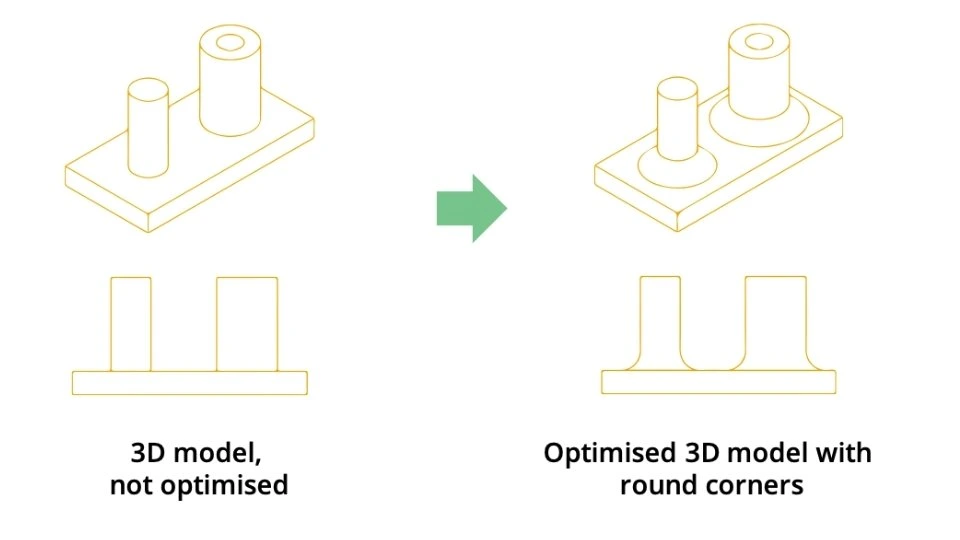
Image Name: 3D Fillet Models
Fillet machining becomes unnecessary with 3D printing. Because the technology enables the creation of complex structures. Stress relief fillets are not needed on the additive-manufactured parts. Flat or straight edges or pockets such as sharp corners can be directly printed with no additional feature. It’s possible to design and manufacture enclosed cavities that are completely encapsulated by material and are not necessarily machined.
When moving from 3D printing to cnc machining process, reconsider designs. Substantial process limitations account for time and expenses that are not cost-efficient.
Chamfer Vs Fillet: What are the Differences?
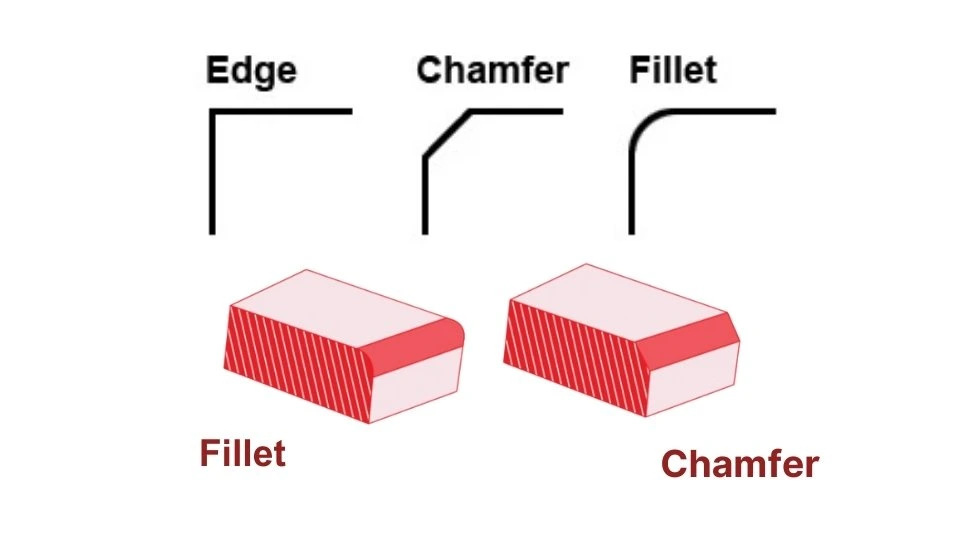
Image Name: Fillet Vs Chamfer Design
Here are the primary differences between fillet vs chamfer
machining:
- In the fillet machining process, you need tooling for different radii sizes. Whereas, chamfers utilize one tool size for many dimensions.
- It’s affordable to use chamfer machining compared to fillet machining. Fillets usually lead to an increased cost of production of parts and fabrications.
- Fillets are safer since they do not have sharp edges/corners. Chamfers comprise sharp edges to the touch and, therefore, require precaution.
- Fillet machining allows stress to be distributed over larger radii. Hence, they do not deform easily. Chamfers focus stress more and may bend.
- In comparison to the machining of chamfered edges, fillets consume more time in their making. Fillet designs are a little more demanding and need higher accuracy during machining.
- Fillet machining takes more time and skill due to its curved edge. Casting and forging are the few best options for making fillets. Compared to other processes, chamfering is quicker and does not need much in the way of machining.
Try Prolean Now!
How Are Fillets Machined: Key Considerations
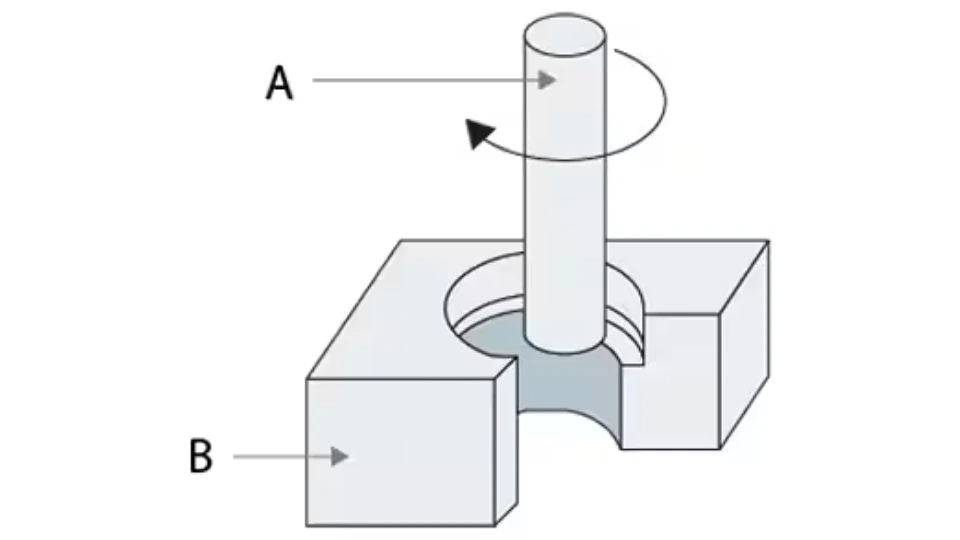
Image Name: Fillet Round Edge Depiction
To design fillets, consider the following;
- Ends of the bottom in CNC Machining
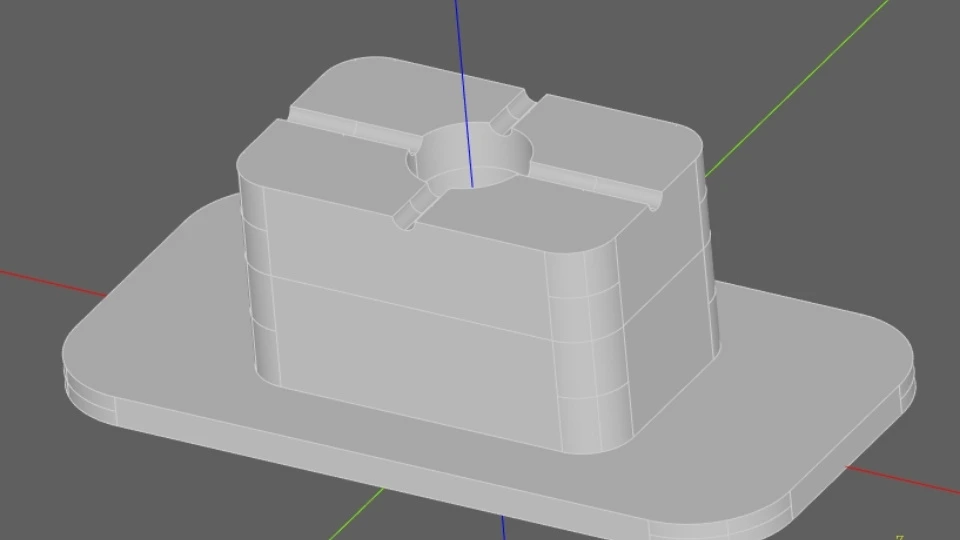
Image Name: Concave Fillet Edges
Fillets at bottomed edges such as concave edges in cavities are challenging to machine using tools in the CNC. These include tools like ball end mills, which are delicate and require slower RPMs. It adds to the manufacturing costs as well as the lead time tremendously. Selecting square-bottom features is comparatively cheaper in most cases.
In the case where your design needs fillets for functionality, you might need to switch to 3D printing. These complex geometries are realized without the encumbrance of other machining complexities by AM(Additive Manufacturing) processes.
- Internal Fillets Between Vertical Walls
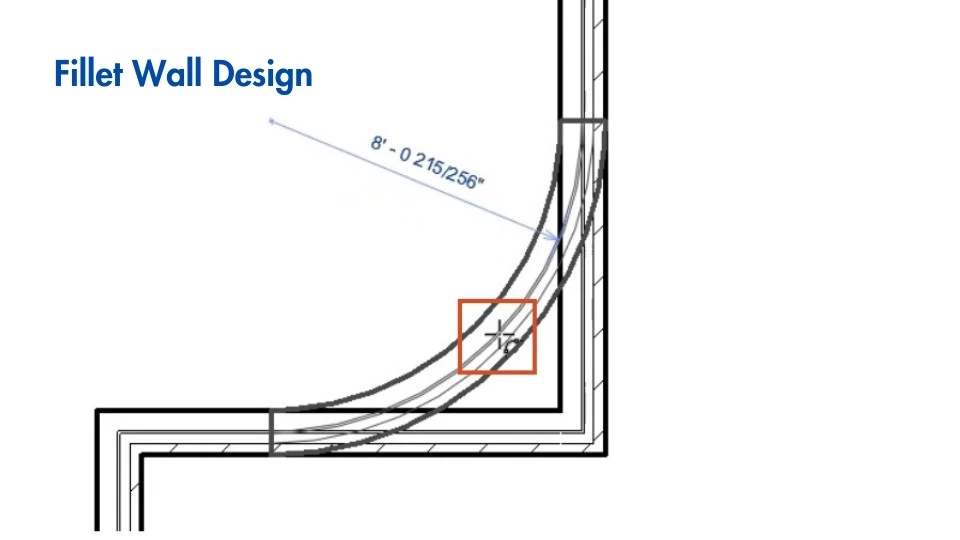
Image Name: Fillet Wall Design
CNC milling inherently creates a rounded inner edge, where vertical side walls adjoin, called fillets. The fillet size is determined by the end mill diameter to be used in the particular operation. For instance, a 0.8 mm diameter tool produces a fillet with a 0.4 mm radius. It is impossible to make smaller radii for example 0.2mm with such tools.
Moreover, while fillet machining between vertical and curved walls, you should take into consideration the tool’s size and length. The length of end mills should be 3 to 5 times their diameter for the best results when using a CNC machine. (Get into Deeper into sheet metal design guidelines)
Applications for Fillets
The frequent uses of fillets are;
- Cosmetic Face Edges
Through fillets on cosmetic faces, edges are blended. This creates a smooth, polished look between them. These cosmetic fillets do not bring strength or stiffness to a part but can add value to the look. Cosmetic fillets should be added after other geometrical characteristics have been determined to prevent extra expenses. As these do not add to functionality, they should be used occasionally to maintain reasonable machining costs.
- Improving Ease of Use and Safety
Fillets also contribute to the removal of sharp corners in metal components which are often challenging to handle. Fillets are a new feature in CNC machining. Sharp edges are often removed. Fillets improve safety in ergonomic designs. Radiused edges provide safety to the user and make the part safer to handle. Where perfect radii are not required it may be sufficient to bend sharp corners for reducing manufacturing costs.
- Assistance with Pin and Fastener Placement
Fillets facilitate the pin or fastener insertion while providing improved holding power to the structure around the hole circumferences.
Although chamfers are preferred in press-fit or threaded holes fillets may also help to align the part in a close tolerance application.
Screwed edges work well with screws, bolts, and pins. The chamfer guides them into the material. These rounded edges minimize stress concentration. It also guarantees that mating surfaces have compatible geometry.
Where Fillets Are Necessary?
Fillet machining is crucial for;
1. Internal Edges between Planar Faces
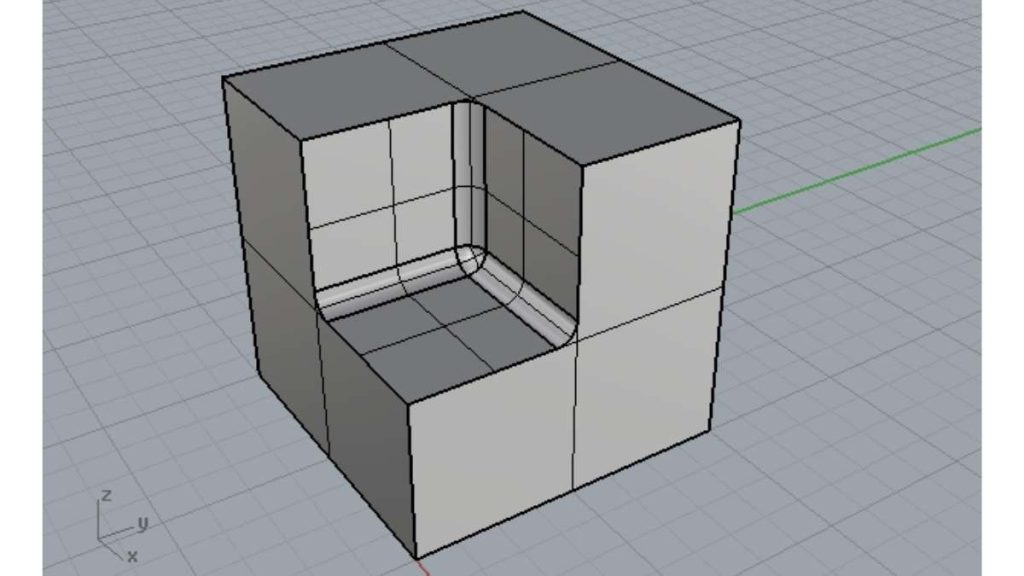
Image Name: Filleting Inside Corner
It’s impossible to tool sharp square corners between two vertical walls. Because CNC tools are round and axially symmetric. This applies to any edge where vertical walls meet at an angle less than 180°. In this case, a fillet is needed for machining. It is advised that fillets are introduced in these areas during DFM analysis. Most of the CNC mill tools are axisymmetric. Although it’s possible to have fly cutters some of the lathe tools are different from the axisymmetric tools. These tools may be useful in some special cases, but fillets are still required in most CNC operations.
2. Transitions between the Angled or Organic Surfaces
Fillets are essential when an angled or organic surface is intersected by another surface at an angle of less than 180°. These edges are usually machined using ball endmills.
The radius of the tool determines the smallest fillet size possible. Otherwise, the transition between these surfaces may not be accurate and can reduce the part strength in question. Optimal fillet design improves the flow, and utility, while at the same time increasing the structure’s longevity.
3. Transitions Between Vertical Surfaces and Slope Surfaces
Fillets are used where the vertical walls adjoin the angled, curved, or organic-shaped parts of the structure. If this step is skipped, leftover material will remain at the junction when the mold is opened, which can change the design. This issue occurs because square or ball endmills can not remove material at such transitions without a fillet.
Fillets are advantageous for providing a means for joining two parts with smooth edges without compromising the load-bearing capacity of the part.
Custom Parts Delivered Quickly at Prolean Tech
Now you have come across fillet machining, you can step on to apply the knowledge to the next part project you are planning to create. If there is any concern about how to specify or select the right fillet size, please do not hesitate to contact Prolean Tech Engineers. They focus on perfecting designs of machined components made from Computer Numerical Control, however complex these are.
To get professional machining service, sign up with Prolean Tech and upload your part today to get an instant online CNC price estimate along with DFM analysis. See how ProleanTech professionals deliver precise components with quick turnaround!

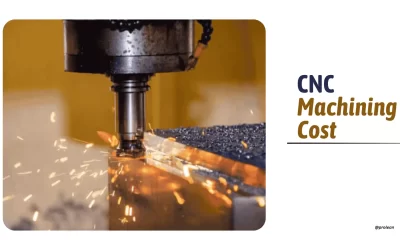
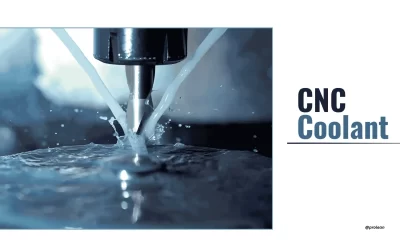
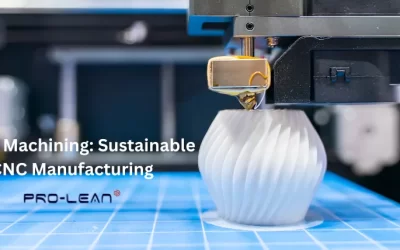
0 Comments